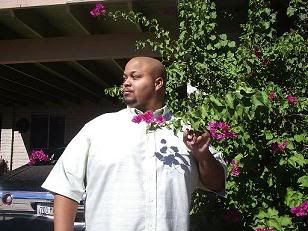Trinidad (
spanish for "trinity")
Trinidad is the southernmost island in the
Caribbean and lies just 11
km (7 miles) off the northeastern coast of
Venezuela. Trinidad is roughly 4,769 km2 (1,864 mi2) and lies between 10° 3' and 10° 50' north
latitude and 60° 55' and 61°55' west
longitude.
Trinidad was originally settled by
Amerindians of
South American origins. It was rediscovered by
Christopher Columbus on his third voyage in
1498. Trinidad remained in
Spanish hands until
1797, but it was largely settled by the French. In
1888 it was united with
Tobago into a single
crown colony. The united entity, Trinidad and Tobago, obtained its independence from the British Empire in
1962 and became a
republic in
1976.
Today:
Today Trinidad is a colourful and lively island, the result of a fusion of many different cultures and beautiful natural features. It hosts an annual pre-
Lenten Carnival (Monday and Tuesday preceding Ash Wednesday) that is considered by many to be the most spectacular in the world and draws tourists from many places across the globe. This party atmosphere is present not just at
carnival time but throughout the year as Trinidadians or 'Trinis' enjoy a culture laced with music and dancing. Styles of popular music include
calypso,
soca and
reggae; whilst at Christmas time a latino style of music known as '
parang' is played and listened to. Trinis are proud of their national identity and flavour.
Indian traditions have also become an important part of the island's culture.
Divali, the annual Hindu festival of lights is celebrated nationally. A week before Divali night there is a week long festival of Indian song, dance and shows called the
Divali Nagar which is held at the
Divali Nagar site in
Chaguanas.
Areas of natural beauty include: a variety of beautiful beaches (e.g.
Maracas, Las Cuevas, Mayaro and
Grande Riviere), swamps (
Nariva and
Caroni), areas of seasonal tropical forests and the hills of the
Northern Range. Trinidad is also the home of such animals as the leopard-like
ocelot, the
manatee,
caimans and the
Scarlet Ibis (see
List of birds of Trinidad and Tobago).
Trinidad is also an industrial island with sugar exports, oil and natural gas which have allowed Trinidad to capitalise on the large mineral reserves within its territories. It has good transport links and infrastructure, although some roads in more rural areas are in disrepair.
The largest religious groups on the island are
Roman Catholics and
Hindus. There are also substantial
Anglican,
Presbyterian,
Muslim,
Methodist,
Spiritual Baptist,
Orisha and independent fundamentalist/evangelical Christian groups.
The capital of Trinidad is
Port-of-Spain, located in the northwest of the island. The second city,
San Fernando, is in the southwest. Between them lies the town of
Chaguanas, the largest city on the island and an important shopping area.


